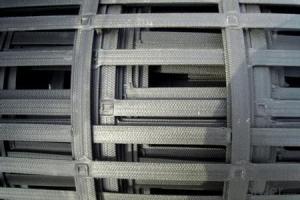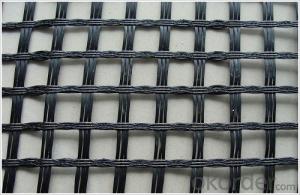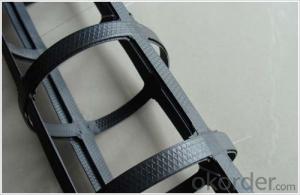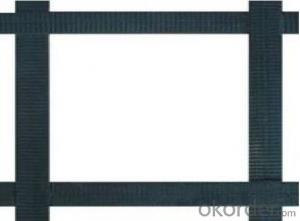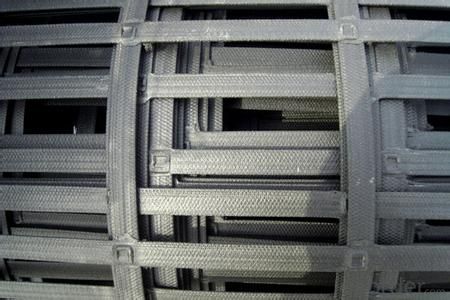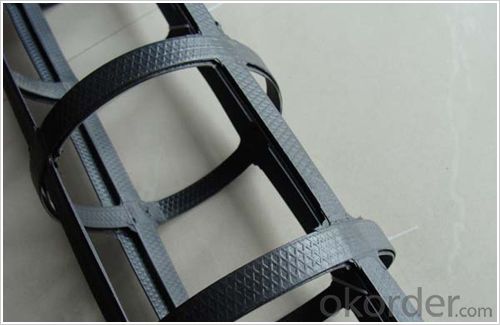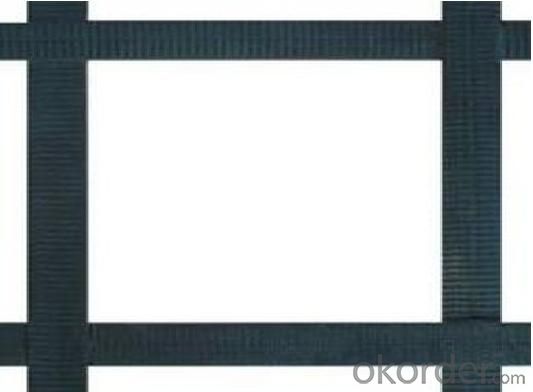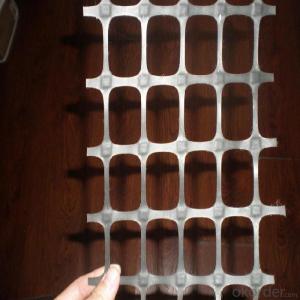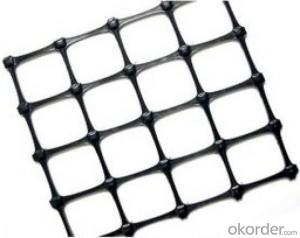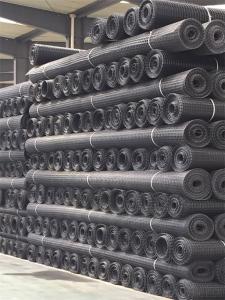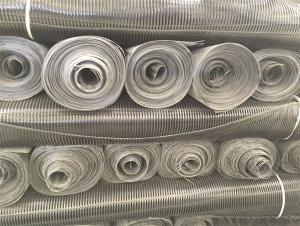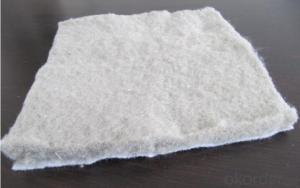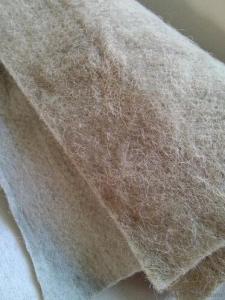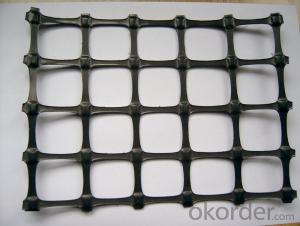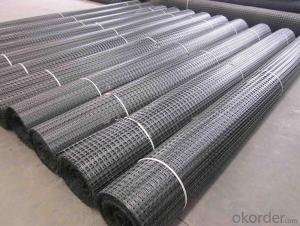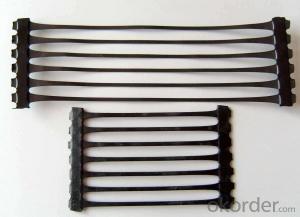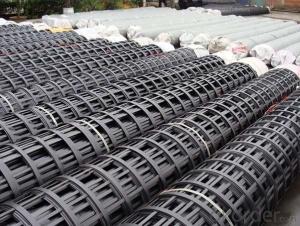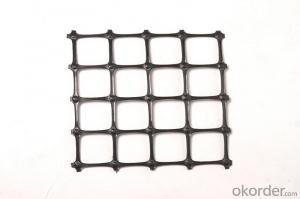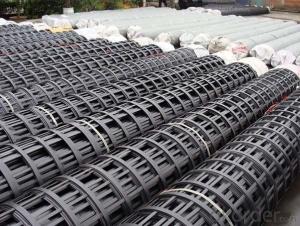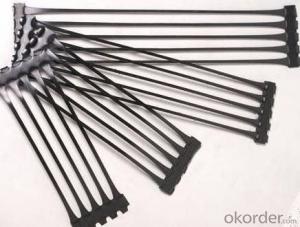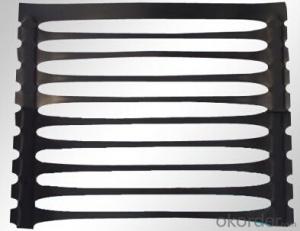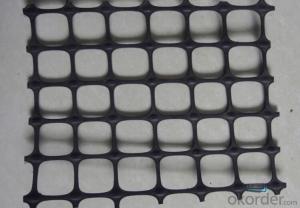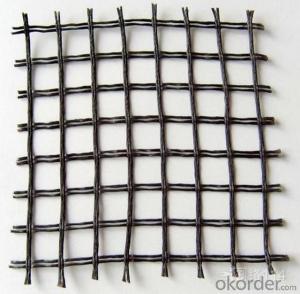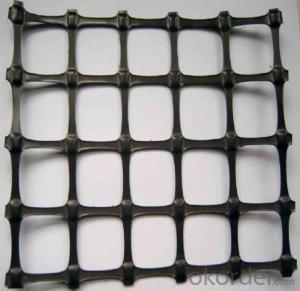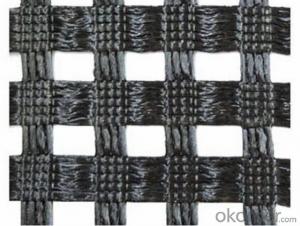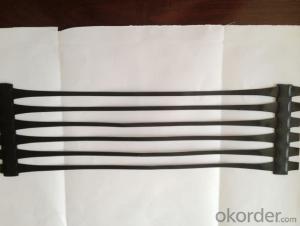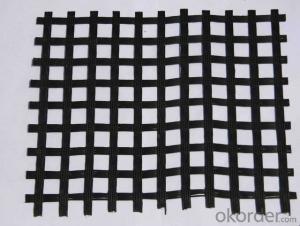Polyester Geogrids - Steel Plastic Geogrid Polyester Geogrid
- Loading Port:
- Tianjin
- Payment Terms:
- TT OR LC
- Min Order Qty:
- 500 m²
- Supply Capability:
- 100000 m²/month
OKorder Service Pledge
OKorder Financial Service
You Might Also Like
Black 100% new raw material steel plastic geogrid
suppliers from china
Description
Plastic biaxial geogrid with high strength steel wire (or other fiber), through special processing, and polyethylene (PE) or polypropylene (PP), and adding other assistants, by extrusion into composite type high tensile belt, and the surface is rough textured, for high strength reinforced geotextile strips. The single band, the longitudinal, transverse certain space preparation or clamping arrangement, with special reinforcement welding technology welding the connection point bonding and molding, is reinforced with Geogrid.
Properties
High stength,small deformation, homogenous stucture, easy for constrution etc.
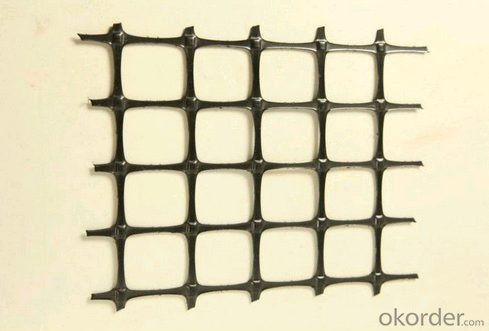
Application
Make reinforcement treatment for varions kinds of sot soil foundation and strengthen shearing resistance of the soil body,used in reinforcement of retaining wall and widening of old road.
It is also used as protect-support net in the coal mine when layer mining of thick (coal) seam, and support of road way in the coal mine.
Specification
| Specifications | GSZ30- 30 | GSZ40-40 | GSZ50-50 | GSZ60-60 | GSZ80-80 | GSZ100- 100 | GSZ150-150 |
| Tensile Strength KN/m(LD) | ≥30 | ≥40 | ≥50 | ≥60 | ≥80 | ≥100 | ≥150 |
| Tensile Strength KN/m(TD) | ≥30 | ≥40 | ≥50 | ≥60 | ≥80 | ≥100 | ≥150 |
| Elongation Rate(LD TD) | ≤2 | ≤2 | ≤2 | ≤2 | ≤2 | ≤2 | ≤2 |
| Tensile Strength at 1% Elongation Rate(LD) | ≥20 | ≥32 | ≥40 | ≥48 | ≥63 | ≥81 | ≥125 |
| Tensile Strength at 1% Elongation Rate(TD) | ≥20 | ≥32 | ≥40 | ≥48 | ≥63 | ≥81 | ≥125 |
| Limit PeelForce at Welded Bonded Point N | ≥100 | ≥100 | ≥100 | ≥100 | ≥100 | ≥100 | ≥100 |
| Products in the range of coal mine | Fire out time from outer flam | ≤3 | |||||
| Surface resistivity | <1×109< span=""> | ||||||
| Packaging Details: | according to your need |
| Delivery Detail: | 7days |

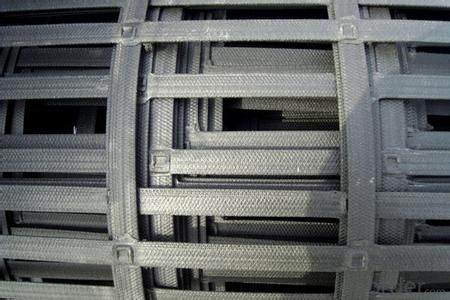
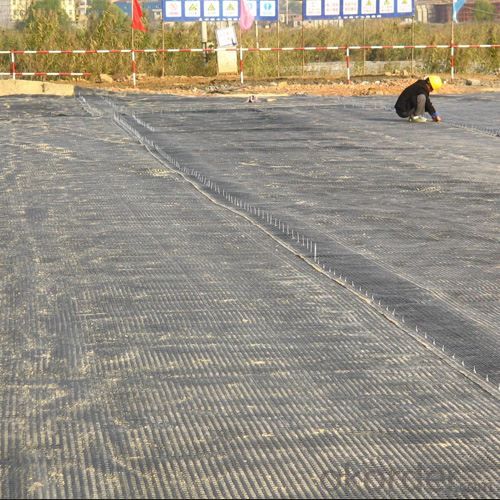
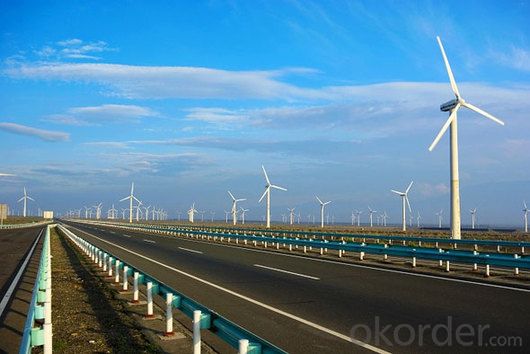
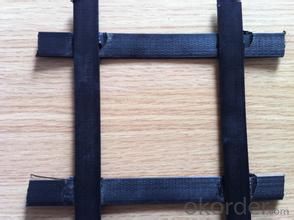
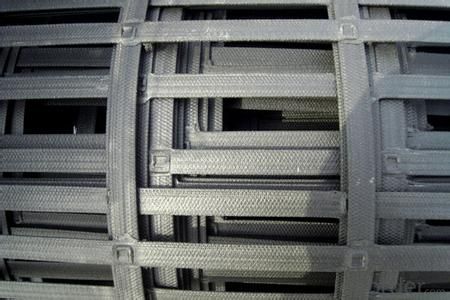
FAQ
1. How about the delivery time?
Lead time since receipt of 30% T/T deposit payment: 3 weeks.
2. What kind of payments does jenor support?
T/T, L/C, Cash are accepted.
3. What's are the MOQ?
We can according to your condition to set the MOQ.
And we can provide you samples for quality inspection.
4. Do you charge for the samples?
Accordeing to our company policy, the samples are freee, we only charge the freight fee. And we will return the freight fee If you set the order .
5. Can you produce the product according to customers' requirements ?
Sure, we are professional manufacturer, OEM and ODM are both welcome.
6. Can you tell me your main customers?
That's our customers' privacy, we should protect their information. At the same time, please rest assured that your information is also safe here.
- Q: Introduction of steel plastic grille
- Construction technology of steel plastic grille
- Q: Can geogrids be used in reinforced concrete structures?
- Yes, geogrids can be used in reinforced concrete structures. Geogrids are commonly used as a reinforcing material in concrete structures to enhance their load-bearing capacity and reduce cracking. They provide additional tensile strength and help distribute the applied loads more efficiently, improving the overall structural performance.
- Q: Geogrid price? Solution!
- Geogrid effect1 used for roadbed reinforcement, so that the granular filler and mesh together locked together to form a stable plane, to prevent the collapse of the filler, and the vertical load can be dispersed, the geographical conditions of poor areas can be used multi-layer reinforcement;2 in the embankment and embankment fill can increase its stability, reduce the area;
- Q: What are the types of geogrid, respectively, what role?
- Glass fiber geogrid features:The product has the characteristics of high strength, low elongation, high temperature resistance, high modulus, light weight, good toughness, corrosion resistance, long service life, can be widely used in the old cement pavement and airport runway maintenance, dams, river, slope protection, bridge pavement engineering field enhancement processing, can give the pavement reinforcement and reinforcement to prevent rutting, fatigue crack of pavement, hot and cold crack and the expansion of reflection crack, and can disperse the bearing capacity of pavement and prolong the service life of the pavement, high tensile strength and low elongation, no long-term creep, high physical and chemical stability, thermal stability, fatigue cracking, rutting resistance, cracking resistance at low temperature delay, reduce the reflection crack.
- Q: What are the factors that affect the cost-effectiveness of geogrid-reinforced structures?
- There are several factors that can affect the cost-effectiveness of geogrid-reinforced structures. These include the type and quality of geogrid material used, the design and engineering of the structure, the site conditions and soil properties, the construction methods employed, and the maintenance and lifespan of the structure. Additionally, factors such as material availability and transportation costs, labor expenses, and any required permits or regulatory compliance can also impact the overall cost-effectiveness of geogrid-reinforced structures.
- Q: What are the design considerations for geogrid-reinforced pavements on soft soils?
- Some of the important design considerations for geogrid-reinforced pavements on soft soils include assessing the soil properties, determining the appropriate geogrid type and placement, considering the load-bearing capacity and stability requirements, evaluating the potential for differential settlement, accounting for construction and maintenance factors, and ensuring proper drainage to prevent water accumulation.
- Q: GDZ150 type one-way steel plastic welding geogrid D in the construction of the roadbed is horizontal paving also vertical spread?
- Of course it is perpendicular to the direction of the route
- Q: Panzhihua steel plastic composite geogrid manufacturers, how much money, where to sell
- High density polyethylene used in steel plastic composite grid ensures
- Q: Are geogrids effective in stabilizing riverbanks?
- Yes, geogrids are effective in stabilizing riverbanks. They provide reinforcement and support to the soil, preventing erosion and maintaining stability along the riverbanks.
- Q: How do geogrids improve the performance of geocells?
- Geogrids improve the performance of geocells by enhancing their load-bearing capacity and stability. They provide additional reinforcement and confinement to the soil within the geocells, preventing lateral spreading and increasing overall strength. Geogrids also help distribute the load more evenly, reducing the risk of differential settlement and improving the structural integrity of the geocell system.
Send your message to us
Polyester Geogrids - Steel Plastic Geogrid Polyester Geogrid
- Loading Port:
- Tianjin
- Payment Terms:
- TT OR LC
- Min Order Qty:
- 500 m²
- Supply Capability:
- 100000 m²/month
OKorder Service Pledge
OKorder Financial Service
Similar products
Hot products
Hot Searches
Related keywords
